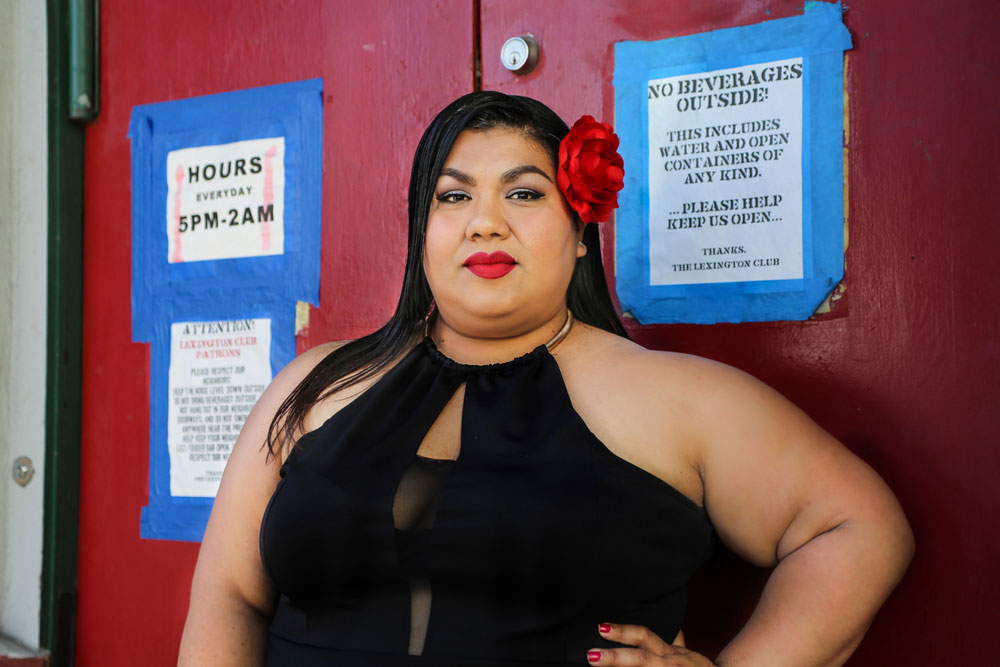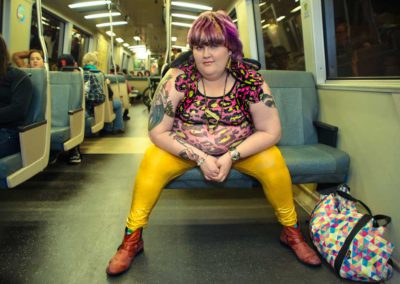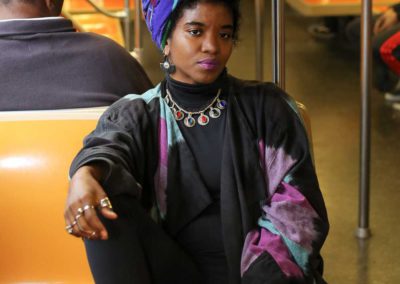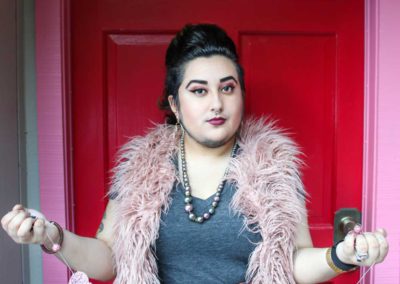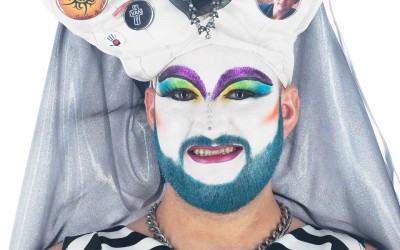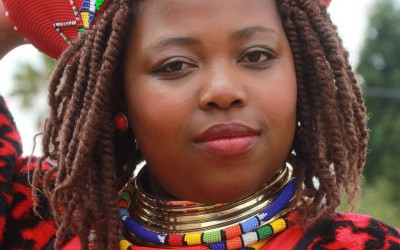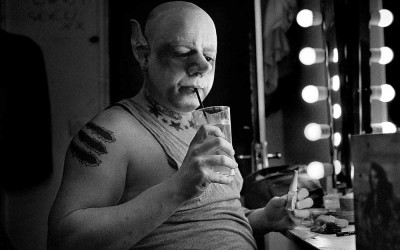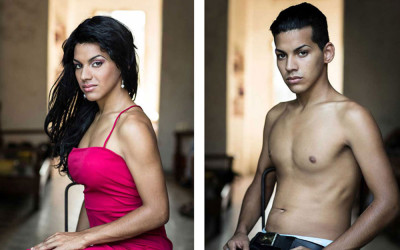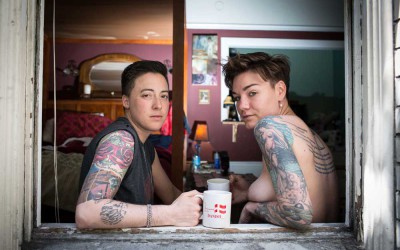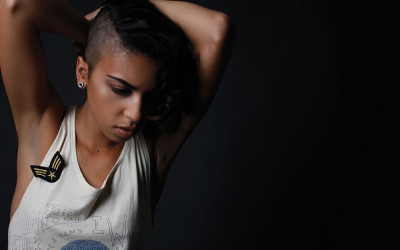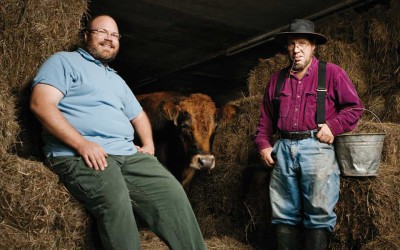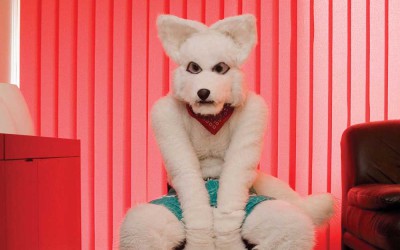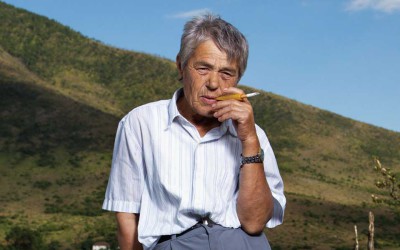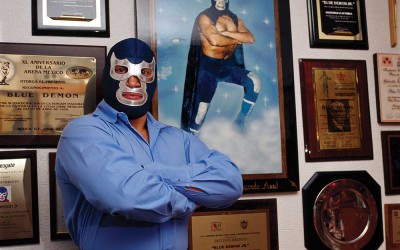Femme Space
Text JF. Pierets Photos Amanda Arkansassy Harris
“If you don’t see femmes as queers, it’s because you choose to not see us. You are invested in our erasure. We are here. We have always been here.” A strong quote, coming from Dulce Garcia, AKA Fierce Femme, one of the participants in Femme Space, a photo project exploring queerfemme identity and reclamations of space through portraiture. Queer femmes of all genders choose locations to reclaim sites of marginalization, erasure and invisibility. A conversation with co-conspirator and photographer Amanda Arkansassy Harris.
Can you give me your personal definition of ‘femme’?
I have thought about that since my mother first tried to wrap her head around me. It’s difficult to explain. It’s feminine and it’s queer and it’s different from straight femininity. My mother asked if femmes shaved their legs, which is actually an important question because some do and some don’t, so I think that’s really illustrative that you can’t define queer femme. When you’re in a community of queer femmes you feel what it is, you feel part of a tribe. But I cannot put an exact definition to it.
You identify as queer femme, so is this a personal project?
Definitely. I’ve had many experiences where my femme identity was either invisible, erased or attacked. Speaking with other femmes, I’ve learned that my experiences aren’t isolated to me, and in fact femmes of all different backgrounds experience marginalization daily. So this project is personal, political and an act of solidarity with femme community.I think there’s something about collaborating with another femme that feels safe. We’re going back to locations where they have experienced daily harassment or judgment,so having another femme there with you to have your back, is a very empowering experience. Plus, I have seen many masculine photo series centered on butch identities and thought we needed to add more femme faces and voices to media.
You talk about reclamation of space. Reclamation as in ‘winning back’?
Reclamation is taking it back for yourself or owning it in a way you didn’t get to own it before. Queer feminine people do not often get to navigate the world in ways that feel good to us or authentic to our experience. This project is about getting to do something on our own terms and to be seen, as we want to be seen.
You thought it important to accompany each picture with the model’s story.
There are a lot of photo projects out there that don’t use any narrative so what I didn’t want was just to have images without the femmes being able to use their own words. Some images have a lot of strength but I find there’s also a great deal of assumption. Femmes already live in a space where they have assumptions made about them all the time, so it’s about getting to say what they want and on their own terms. I wanted to avoid having people trying to guess who they are and how that experience was for them.
You say Femme Space exists to draw attention to the experiences of queer femmes and to amplify those stories in art and media. Are you aiming for a mainstream audience?
A mainstream audience is a secondary audience for me, with Queer community being the primary audience. If part of the mainstream can look at our stories and really see us, then that’s great. Yet if they can’t, we are doing the storytelling primarily in queer community, which is also fine by me. I want to elevate those stories to whoever can hear them.
‘From portrait photography to holding a sign on a street corner, art stops people in their tracks to have a conversation with you.’
You are taking the word “queer” as a political identity. Can you elaborate?
Queer is a great catch all term, but indeed I see it as a political identity. For me it’s about not assimilating: not trying to be like straight people or live our lives based on heteronormative values, but to really set our own standards and values that aren’t mirrors of what straight people think we should be. Classic example questions of this are “should we be fighting for gay marriage?” Are we trying to get the same things as straight people, or do we want to set our own terms of what relationships should look like? To me that’s a very queer issue, and I do consider myself queer because of the way that I view the world. My art is queer activism. Curating is activism, because it’s about trying to bring as many people to the table as you can to tell a larger story.
I guess such an involvement doesn’t happen overnight?
Not at all. I grew up in a rural town with one stoplight in the south in Arkansas. I always felt a little bit different and couldn’t quite place what that was. I didn’t know that it was queerness at the time, but I didn’t see myself fully reflected in the people around me. I’ve always been a writer, always making things. Once I came out as queer I got involved in an organization in Arkansas that uses art for social change, Center for Artistic Revolution. And I saw the power of that: the power of artists creating art to make change, the introspective process and how people responded to it. From portrait photography to holding a sign on a street corner, art stops people in their tracks to have a conversation with you. I was in my 20’s when I saw the power art has to tell stories and I’ve been pursuing it ever since. I’m really fortunate to live in San Francisco where you can get small amounts of arts funding to dream up these projects.
Tell me about your plans with the Femme Space project?
The Femme Space project is still unfolding itself to me and I’m trying to be really patient with that. I’ve been trying to digest the femmes who are coming to me – telling me what the project means to them – and thinking about where I would like that to go in the future. I have a form on my website for people who want to participate and I’ve received responses from Germany, the UK, Taiwan, all over the world. So if these femmes see value in this project and they want to participate, then maybe I need to go to them. But what I definitely want for a project like this is for it to be considered as radical, revolutionary and important. These are stories that need to be told.
Related articles
Unveiled
Belle Ancell is a queer community photographer living in Canada. Amongst her series there is “Unveiled”, portraits of the Vancouver Sisters of Perpetual Indulgence. In-depth photographs and representations of people who are, just like…..
Chubby Vogue Divas
Chubby Vogue Divas is an ongoing photography project by artist and activist Charmain Carrol. Her being an activist started in the 90s when black lesbians went through a phase where their parents were not accepting their children’s sexual orientation…..
Boystory
Danish-born Arrevad spent five years documenting the international, subterranean world of male performers, burlesque, go-go dancers, cabaret singers and porn stars. The journey would take him to New York, Berlin, Paris,…..
Reassign
Born in Chile, raised in Europe, and with an advanced training in photography, Claudia González has spent the last 2 years working on her project called Reassign. In order to make this series, Gonzàlez joined forces with Mariela Castro’s sexuality…..
Meg Allen
In her series ‘Butch’, photographer Meg Allen shows a variety of women who fall under the category of more masculine than feminine. Over the years people have been given different names to lesbians, and being butch is yet another flavor…..
Kanithea Powell
‘Well, these aren’t your typical flannel, mullet, boot wearing butches. This new art book pushes the Butch-definition beyond its seams. Packed with fashion forward pictures that are vivid, dramatic and provocative. These gender-bending bois will……
Gay in America
Scott Pasfield celebrates diversity in this first-ever photographic survey of gay men in America. Stereotypes are laid to rest and an intimate, honest picture of contemporary gay life is revealed through stunning personal portraits and narratives of 140 gay…..
Furries
From 2003 until 2008, Charlotte Lybeer photographed gated communities and actual “theme parks” in the US, South Africa, Europe, China and the Arab Emirates. ‘The success of these ‘enclaves’ proves that in a society without boundaries, we still…..
Sworn Virgins
Northern Albanian women, faced with a culture that subjugates females, live and dress as men in order to provide for their families. These sworn virgins took a vow of chastity, wear male clothing and live as men in the patriarchal northern…..
Masked Superstars
For thirty years photographer Lourdes Grobet has penetrated the world of one of the most popular sports and deep-seated traditions in Mexico: Lucha Libre-wrestling. She documented the lives of the fighters inside and outside of the ring. Lucha Libre…..
Bears
Heavily set, rugged and fiercely hyper-masculine, these are males who convey strength, identity and are an ever-growing subculture of the lesbian, gay, bisexual and transgender (lgbt) population. Welcome to the “bear” community. Evolving in the…..
The Tokyo Hotel Story
Photographer Nathalie Daoust first broke onto the scene in 1997 while photographing the themed rooms of the Carlton Arms Hotel in New York. This project, her first solo exhibition, was published into a book, New York Hotel Story. Since then…..
